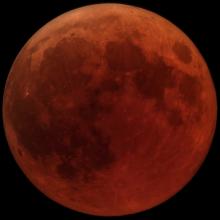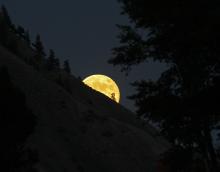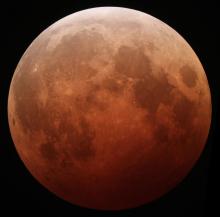Listen to today's episode of StarDate on the web the same day it airs in high-quality streaming audio without any extra ads or announcements. Choose a $8 one-month pass, or listen every day for a year for just $30.
You are here
Hunter’s Moon
Few Americans have to hunt wild game to survive the long, cold winter these days. But that hasn’t always been the case. Native tribes and European settlers alike had to stock up as the weather grew cooler. And they relied on an autumn full Moon for help: the Hunter’s Moon.
And that Moon is coming up tonight. It’s the full Moon after the Harvest Moon, which appeared in September.
Like the Harvest Moon, the Hunter’s Moon helped people prepare for winter. Its light made it easier to see deer and other animals. And at high northern latitudes, the Moon rises only about a half-hour later each night around full Moon — a much smaller gap than average. So the big, bright Moon was in view by the time evening twilight faded away — allowing hunters to stay in the fields long into the night.
Despite what many people think, though, the Harvest and Hunter’s Moons aren’t any bigger and brighter than any other full Moons. The Moon’s orbit and its cycle of phases aren’t synchronized. So some years the Hunter’s Moon is closer than average. In other years, though, it’s farther than average — including this year. The Moon was farthest from Earth for its current orbit on Thursday. So we’re still thousands of miles farther than the average distance.
That means this year’s Hunter’s Moon is actually a little below average for a full Moon. Even so, it’s a beautiful sight, lighting the autumn fields for hunters — and everyone else, too.
Tomorrow: moons become planets.
Script by Damond Benningfield






